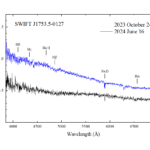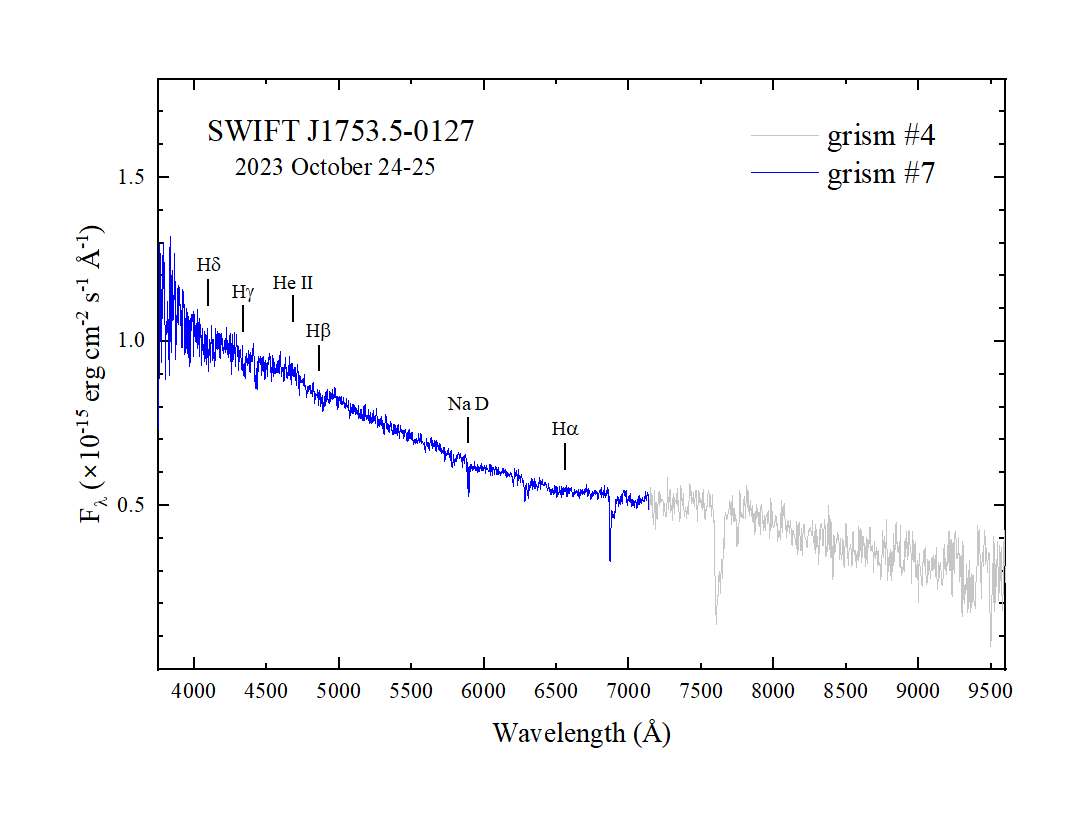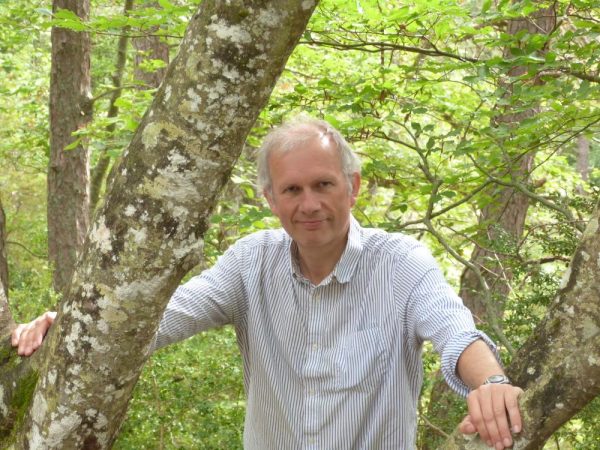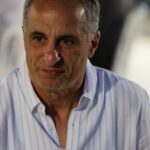June 18th, 2024 / Comments Off on ATel #16660: The optical spectrum of the black hole transient SWIFT J1753.5-0127 remains featureless / by Vitaly
ATel #16660 (18 Jun 2024): V. V. Neustroev (University of Oulu)
Here we report new optical, UV, and X-ray observations acquired with the Nordic Optical Telescope (NOT) and the UVOT and XRT instruments of NASA’s Neil Gehrels Swift observatory.
The black hole X-ray binary SWIFT J1753.5-0127 entered the second known optical outburst on 2023 September 28 (ATel #16262). In a few days, an optical flux of the transient reached a level, similar to its previous outburst (V~16.75, ATel #16314, #16318). It remained approximately constant until the end of the visibility period due to the Sun constraint (the end of October 2023). The first optical spectra of the source, obtained in the new outburst on October 24 and 25, show a blue continuum with no spectral lines, except for telluric and interstellar absorption lines (ATel #16314).
The first observations after the Sun constraint, performed at the end of January and the beginning of February of 2024, showed that SWIFT J1753.5-0127 is already heading towards quiescence (ATel #16427, #16447). The optical observations acquired on March 8 with the Las Cumbres Observatory network found the transient at r’ = 21.57 +/- 0.18 (ATel #16527). However, the following optical monitoring has shown that the source re-brightened once again, reaching V = 18.28 +/- 0.02 on March 27 (ATel #16559).
Since then, the source has been observed multiple times by NASA’s Neil Gehrels Swift observatory with the XRT and UVOT instruments. According to the UVOT observations, SWIFT J1753.5-0127 has been quite stable at the average magnitude of uvw2 = 17.75 +/- 0.14 (the error is the RMS deviation of the measured magnitudes). This is about a half-magnitude dimmer than during the plateau stage before the Sun constraint (uvw2 = 17.30 +/- 0.12). The Swift/XRT observations showed that a count rate in the 0.3-10.0 keV energy range had been steadily rising from 0.26 +/- 0.02 cts/s on April 7 up to 1.30 +/- 0.08 cts/s on May 4. After that, it started declining and reached a level of 0.50 +/- 0.06 cts/s on June 14.
We observed SWIFT J1753.5-0127 on June 16 with the NOT/ALFOSC imager and spectrograph. We acquired multicolour photometric data and obtained the following magnitudes:
u’=17.62 +/- 0.06, g’=17.47 +/- 0.03, r’=17.16 +/- 0.02, i’=16.92 +/- 0.02, z’=16.82 +/- 0.02.
We note that during the previous outburst started in 2005, SWIFT J1753.5-0127 showed a rather featureless optical spectrum most of the time until 2013 when the object slightly declined and the broad emission lines emerged (ATel #5307; Neustroev et al. 2014, MNRAS, 445, 2424). Now the object has an optical flux lower by about 30 per cent than in 2013. Attempting to detect emission lines, we obtained 3 spectra with a total exposure time of 30 mins, using grism #7 and a slit width of 1 arcsecond which provide a spectral resolution of R~650 in the spectral range 3650-7110 Angstrom.
We find that the optical spectrum of the transient remains featureless.
-

-
The average spectrum of Swift J1753.5-0127
See also ATel #16314 & #16427.

Posted in: Astronomy, Observations, Publications, Work
Tags: ATel, News
February 4th, 2024 / Comments Off on ATel #16427: Is Swift J1753.5-0127 already heading to quiescence? / by Vitaly
ATel #16427 (1 Feb 2024): V. V. Neustroev (University of Oulu)
The black hole low-mass X-ray binary Swift J1753.5-0127 entered a new outburst on 2023 September 28 (ATel #16262), triggering several multi-wavelength observing campaigns (ATel #16272, #16283, #16281, #16308, #16314, #16318). After reaching the optical maximum at V = 16.60 +/- 0.02 on 2023 October 4, the optical flux of Swift J1753.5-0127 varied only mildly staying at the level of ~16.75V until the end of October 2023 (ATel #16314, #16318), after which the source was Sun-constrained and could not be observed.
We observed Swift J1753.5-0127 again in the morning of 2024 February 1 (MJD 60341.3), using the Nordic Optical Telescope (NOT) equipped with the ALFOSC imager and spectrograph. Observations were performed with the Johnson V and SDSS u’, g’, r’, i’, and z’ filters. At the position of the transient, we found a relatively dim source with the following magnitudes (it is not seen in the u’ image):
V=19.57+/-0.07 (Vega system), g’=19.82+/-0.10, r’=19.17+/-0.05, i’=18.93+/-0.04, z’=18.61+/-0.05 (AB system).
While Swift J1753.5-0127 is still more than 2 mag brighter than it has been found in a quiescent state (ATel #10664), our measurements indicate that the transient might already be heading to quiescence. Nevertheless, we note that at the end of the previous outburst, when reached a similarly low optical flux, the transient experienced the following mini-outburst and a few reflares (Zhang et al., 2019, ApJ, 876, 5). As a Sun-constrained period for ground-based optical telescopes is already ending, we encourage multi-wavelength follow-up observations.
The data presented here were obtained with ALFOSC, which is provided by the Instituto de Astrofisica de Andalucia (IAA) under a joint agreement with the University of Copenhagen and NOT.

Posted in: Astronomy, Observations, Publications, Work
Tags: ATel, News
December 26th, 2023 / Comments Off on Merry Christmas and a Happy New 2024 year! / by Vitaly
I wish to everyone Merry Christmas and a Happy New 2024 Year!
Enjoy you time with your loved ones and wishing you all the best in 2024.

Posted in: Blog
Tags: News
November 1st, 2023 / Comments Off on ATel #16314: Optical spectroscopy and optical-NIR photometry of the black hole transient SWIFT J1753.5-0127 / by Vitaly
ATel #16314 (1 Nov 2023): V. V. Neustroev, T. A. Laaperi, E. S. Leskinen, R. J. Liimatainen, L. V. Ruotsalainen (University of Oulu), S. Moran, G. Fedorets, T. Kangas, E. Kankare (University of Turku)
The black hole X-ray binary Swift J1753.5-0127 entered a new optical outburst on 2023 September 28 (ATel #16262). On October 1, the transient was detected in soft X-rays (ATel #16272, ATel #283), and subsequently in the radio (ATel #16281) and hard X-rays (ATel #16308). Here, we report our optical and infrared observations performed on October 24, 25, and 27 with the Nordic Optical Telescope (NOT).
On October 24 and 25, we observed the transient with ALFOSC (the Alhambra Faint Object Spectrograph and Camera). On October 24, we obtained 10 spectra with a total exposure time of 70 min with grism #7 and a slit width of 1 arcsecond which provide a spectral resolution of R~650 in the spectral range 3650-7110 Angstrom. On October 25, we obtained 3 spectra with a total exposure time of 15 min, using grism #4 which provides a lower resolution of ~360 but a broader wavelength coverage of 3200-9600 Angstrom.
The spectra show a blue continuum but no emission lines are seen even in the average spectrum (S/N~70 at Halpha and ~50 at Hbeta). However, in addition to telluric and interstellar absorption lines (e.g. the Na D doublet), the spectrum exhibits a weak sign of broad absorption features at the wavelengths of Hbeta, Hdelta, and possibly Hgamma lines, but not Halpha.
We note that during the previous outburst of SWIFT J1753.5-0127 which began in 2005, the emission lines Halpha and HeII 4686 were observed only at the very beginning of the outburst (ATel #551, #566). The lines disappeared a month later (Cadolle Bel et al. 2007, ApJ, 659, 549) and after that, the object showed a rather featureless spectrum (Durant et al. 2009, MNRAS, 392, 309) until 2013 when the broad emission lines re-appeared again (ATel #5307; Neustroev et al. 2014, MNRAS, 445, 2424).
To check the current photometric state of Swift J1753.5-0127 during our spectroscopic observations, we additionally obtained multicolour photometric data. These observations were performed on October 24 with ALFOSC through the SDSS g’, r’, i’, and z’ filters, and on October 27 with NOTCam (the Nordic Optical Telescope near-infrared Camera and spectrograph) through the J, H, and Ks filters. These observations gave the following magnitudes: g’=16.86+/-0.02, r’=16.73+/-0.01, i’=16.50+/-0.02, z’=16.51+/-0.02, J=15.61+/-0.02, H=15.31+/-0.05, Ks=15.01+/-0.07.

The data presented here were obtained in part with ALFOSC, which is provided by the Instituto de Astrofisica de Andalucia (IAA) under a joint agreement with the University of Copenhagen and NOT.

Posted in: Astronomy, Observations, Publications, Work
Tags: ATel, News
July 15th, 2023 / Comments Off on A brown dwarf donor and an optically thin accretion disc with a complex stream impact region in the period-bouncer candidate BW Sculptoris / by Vitaly
The new paper entitled “A brown dwarf donor and an optically thin accretion disc with a complex stream impact region in the period-bouncer candidate BW Sculptoris” has been published in MNRAS in June 2023:
V.V. Neustroev & I. Mantynen, 2023, MNRAS, 523, 6114 (Open access).
It took a while to be accepted. Received: 23 August 2022. Accepted: 05 June 2023. Published: 13 June 2023.
Abstract:
We present an analysis of multi-epoch spectroscopic and photometric observations of the WZ Sge-type dwarf nova BW Scl, a period-bouncer candidate. We detected multiple irradiation-induced emission lines from the donor star allowing the radial velocity variations to be measured with high accuracy. Also, using the absorption lines Mgii 4481 and Caii K originated in the photosphere of the accreting white dwarf (WD), we measured the radial velocity semi-amplitude of the WD and its gravitational redshift. We find that the WD has a mass of 0.85±0.04 M⊙, while the donor is a low-mass object with a mass of 0.051±0.006 M⊙, well below the hydrogen-burning limit. Using NIR data, we put an upper limit on the effective temperature of the donor to be ≲1600 K, corresponding to a brown dwarf of T spectral type. The optically thin accretion disc in BW Scl has a very low luminosity ≲4×1030 erg s−1 which corresponds to a very low mass accretion rate of ≲7×10−13 M⊙ year−1. The outer parts of the disc have a low density allowing the stream to flow down to the inner disc regions. The brightest part of the hotspot is located close to the circularization radius of the disc. The hotspot is optically thick and has a complex, elongated structure. Based on the measured system parameters, we discuss the evolutionary status of the system.
Supplementary figures (dynamical Doppler maps) available at this URL.

Posted in: Astronomy, Publications, Work
Tags: News
July 11th, 2023 / Comments Off on VAM-2023 / by Vitaly
I attended the First Vasto Accretion Meeting (VAM2023) in Vasto (Italy) and have given the talk “Optically thin accretion discs in cataclysmic variables with a low mass-transfer rate”. The slides (as well as other presentations of the conference) can be downloaded from here (my file is in the Friday’s folder).

Posted in: Astronomy, Conferences, Work
Tags: Conferences, News
March 2nd, 2023 / Comments Off on MNRAS goes open access / by Vitaly
Not good news. The Royal Astronomical Society has just announced that all authors publishing in MNRAS will soon have to pay page charges.

Posted in: Astronomy, Publications, Work
Tags: News
February 25th, 2023 / Comments Off on Happy MJD60000! / by Vitaly
In observational astronomy, in order not to have problems with months and leap years, the time is counted in Julian days. The Julian day (JD) is the continuous count of days since the beginning of the Julian period, Greenwich noon on January 1, 4713 BC, until the given time. For almost my entire career, this number has been like JD245####. The number is long, so in my papers, I usually use only the last 4 digits, a kind of unofficial format. But there is an official format, Modified Julian Day (MJD), which is MJD=JD-2400000.5
Well, today my format stopped working because today is MJD 60000!

Posted in: Astronomy, Observations, Work
Tags: News
December 21st, 2022 / Comments Off on MAGIC paper accepted in Physical Review Letters / by Vitaly
Search for Gamma-ray Spectral Lines from Dark Matter Annihilation up to 100 TeV towards the Galactic Center with MAGIC.
arXiv:2212.10527
Line-like features in TeV γ-rays constitute a “smoking gun” for TeV-scale particle dark matter and new physics. Probing the Galactic Center region with ground-based Cherenkov telescopes enables the search for TeV spectral features in immediate association with a dense dark matter reservoir at a sensitivity out of reach for satellite γ-ray detectors, and direct detection and collider experiments. We report on 223 hours of observations of the Galactic Center region with the MAGIC stereoscopic telescope system reaching γ-ray energies up to 100 TeV. We improved the sensitivity to spectral lines at high energies using large-zenith-angle observations and a novel background modeling method within a maximum-likelihood analysis in the energy domain. No line-like spectral feature is found in our analysis. Therefore, we constrain the cross section for dark matter annihilation into two photons to ⟨σv⟩≲5×10−28 cm3 s−1 at 1 TeV and ⟨σv⟩≲1×10−25 cm3 s−1 at 100 TeV, achieving the best limits to date for a dark matter mass above 20 TeV and a cuspy dark matter profile at the Galactic Center. Finally, we use the derived limits for both cuspy and cored dark matter profiles to constrain supersymmetric wino models.

Posted in: Astronomy, MAGIC, Publications
Tags: News
December 6th, 2022 / Comments Off on R.I.P. Tom Marsh (1961-2022) / by Vitaly
I was deeply shocked by the terrible news about the mysterious disappearance of Tom Marsh just a few weeks after our last meeting in August. Almost every day I checked different internet sources hoping to find good news before the tragic one appeared about finding his body.
I first learned about Tom in the late 1980s when I was a student working on modeling double-peaked profiles of emission lines from accreting discs. I was thrilled about the prospect of a new method of Doppler tomography, developed by Tom Marsh and Keith Horne in 1988. Since then I started reading all of Tom’s papers. He was a great and inspirational scientist.
I first met Tom in person in June of 1998, when we both attended the Summer School “Astrophysical Discs” in Cambridge, Tom was a lecturer, and I was a participant. I was impressed that he was always surrounded by young colleagues with whom he generously shared his vast knowledge. Since then, we have met many times at different conferences and also on La Palma, where Tom often observed.
I wish I had the opportunity to work with Tom closer, but I’m glad that I had the privilege to collaborate with Tom on several projects. The last time we had a long discussion was in August in Tuebingen, just a few weeks before Tom’s disappearance.
I send my deepest condolences to Tom’s family and friends. This is a great loss to all of us but he will remain in our hearts forever. May you rest in peace, Tom.


Posted in: Astronomy, Blog, Official, Work
Tags: News, Official




















